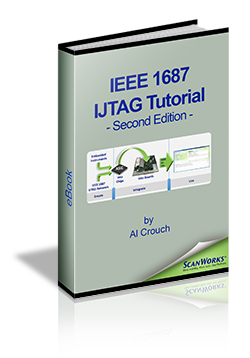The ratification this week of the IEEE 1687 Internal JTAG (IJTAG) standard for embedded instruments by a vote of the IEEE Standards Board represents a major step toward the widespread adoption of this new standard even though an IJTAG ecosystem has been emerging over the last several years.
What Does IJTAG Mean for the Industry?
For years chip designers have placed embedded instruments and other blocks of intellectual property (IP) into their chips. Controlling, managing and getting the most out of these instruments and IP has been a challenge for engineers. Depending on its developer, each embedded instrument or IP block might have its own access methodology and control protocols. Engineers had to learn how to deal with embedded instruments one instrument at a time.
In addition, it wasn’t easy to re-use an embedded instrument in a new chip design. That is, the IP was not easily transferable from one design to the next. It would have to be re-designed to make it fit into each new chip design.
IJTAG is a game changer because it specifies a standardized interface for embedded instruments which makes them compatible with the IJTAG-specified on-chip network. When an instrument has the IJTAG interface, it is plug-and-play transferable from one IJTAG-compatible chip design to the next. Plus, engineers have a standardized way of managing the instruments on the IJTAG network. Each IJTAG instrument, no matter where it came from or who developed it, is accessed, controlled and managed through the protocols of the IJTAG standard. No more learning new methods for each instrument. In fact, an instrument’s operational processes or vectors that were developed in IJTAG’s Procedure Description Language (PDL) are also portable right along with the instrument itself.
IJTAG’s Adoption
The adoption of a new IEEE standard always accelerates with the introduction of tools that help engineers use the standard. This sort of tools ecosystem is already in place for IJTAG. EDA companies like Mentor Graphics have introduced tools for integrating instruments and the IJTAG infrastructure into chips. And ASSET’s ScanWorks platform provides engineers with tools for using embedded instruments in various applications like chip verification, but also circuit board validation and test.
One of the beauties of IJTAG is the fact that it enhances the value of embedded instruments beyond the chips where these instruments have been embedded. With IJTAG, this value is extended to the circuit boards where on-chip IJTAG instruments might be employed in a wide range of system-level applications, including circuit board design validation, testing boards on the assembly line or even field service.
IJTAG’s acceptance by the IEEE marks the culmination of a lot of hard work by a lot of people in the industry, including one of ASSET chief technologists, Al Crouch, who served as vice-chairman of the IJTAG committee. The next phase for the standard will involve a concerted effort to educate and share information with the industry on the extensive value of IJTAG. Like the building of the tools ecosystem, this educational phase is already underway.
Mentor and ASSET will be rolling out a series of educational IJTAG workshops during the spring of 2015 in North America, Europe and Asia. Instructors will include Al Crouch and others who developed the IJTAG standard. Don’t miss out on this great opportunity to jump on the IJTAG bandwagon.
And if you just want to learn more about IEEE 1687 IJTAG, we’ve published a new IJTAG Tutorial based on the approved version of the standard. Check it out here.



